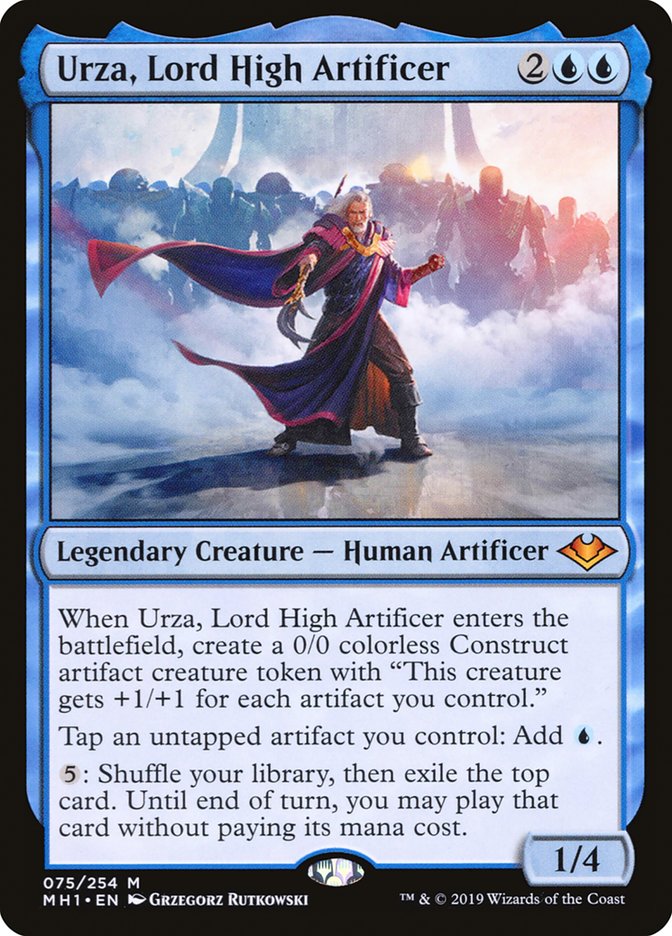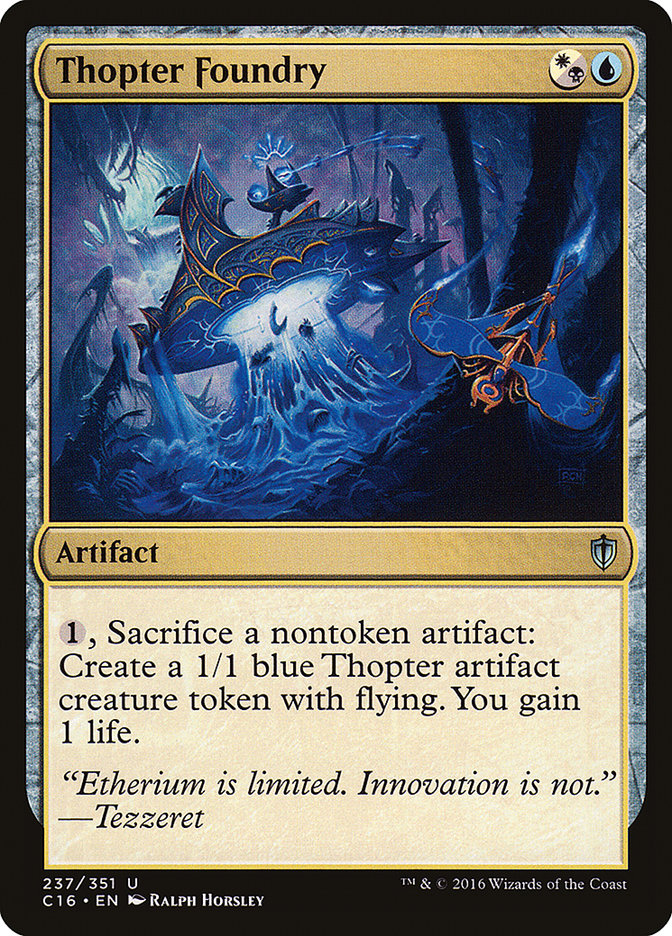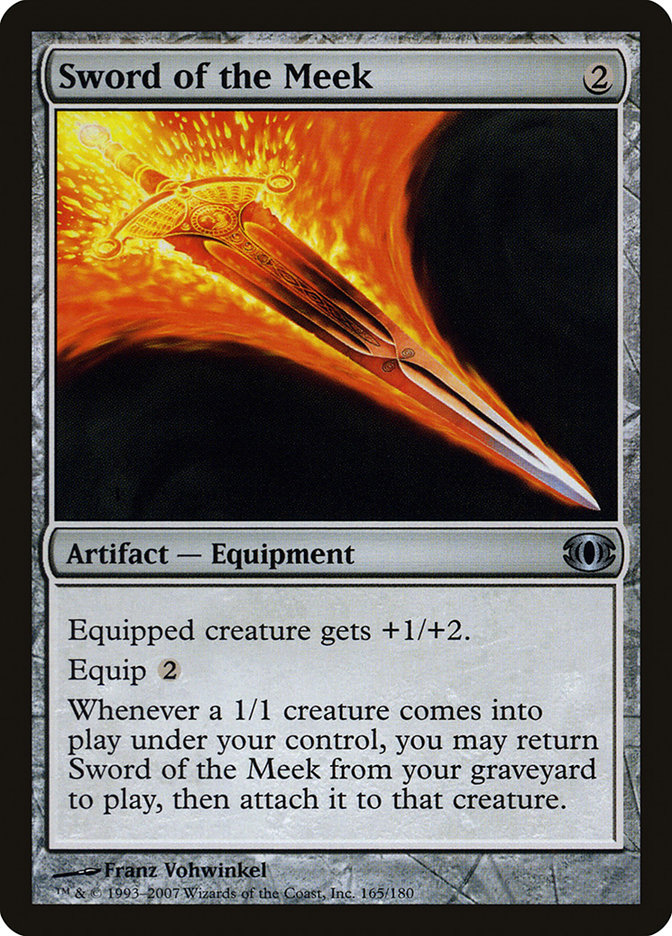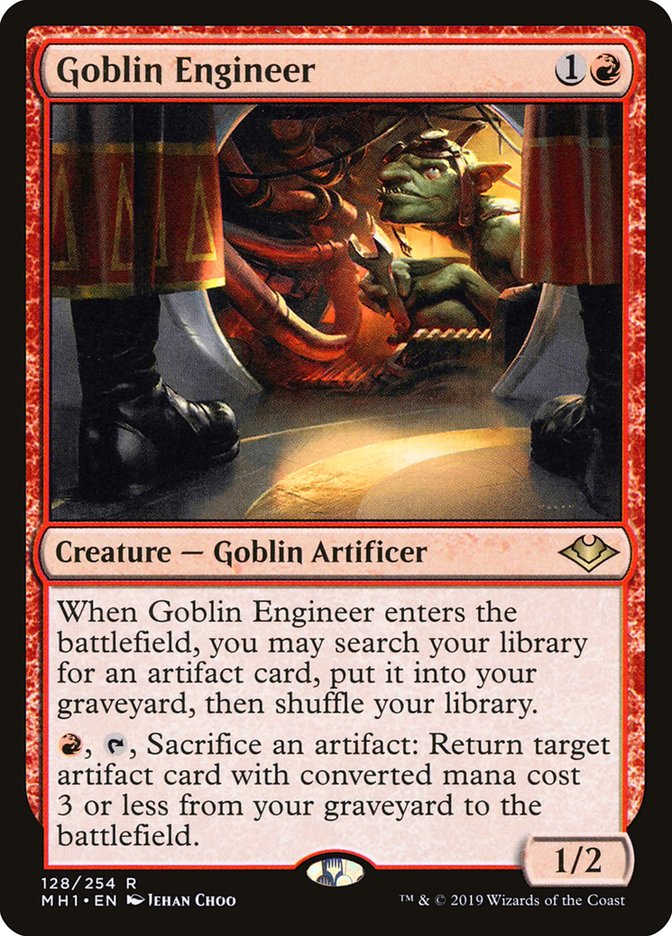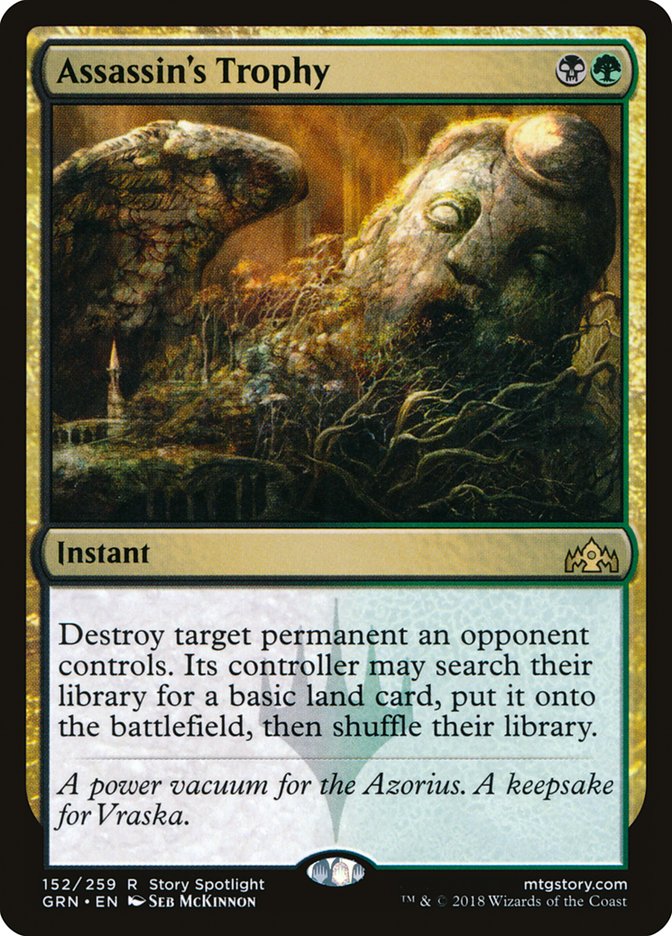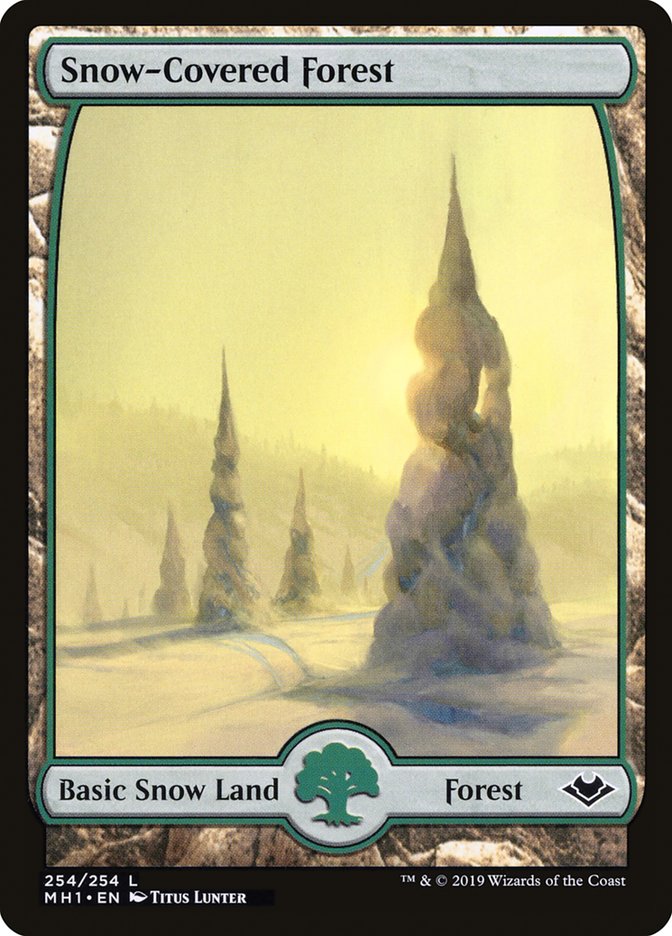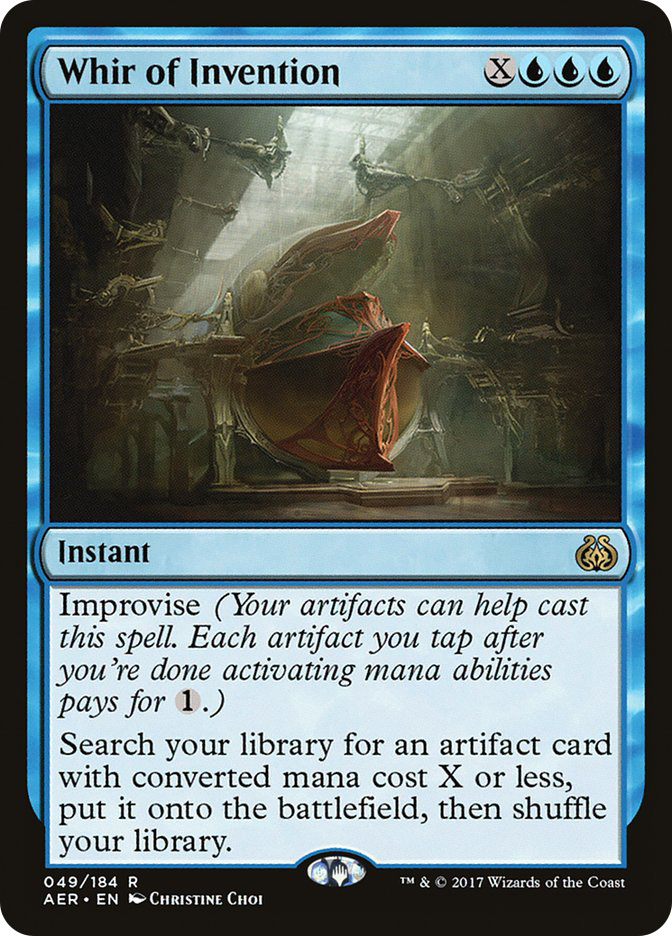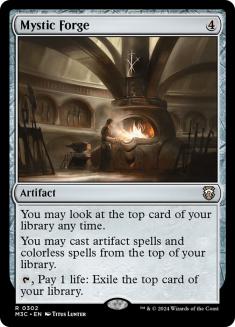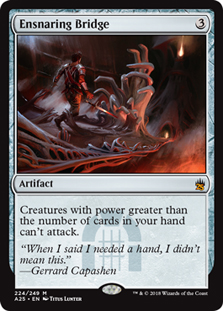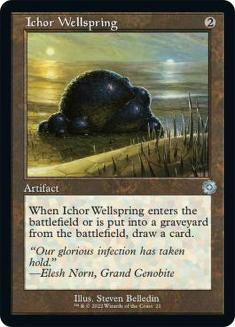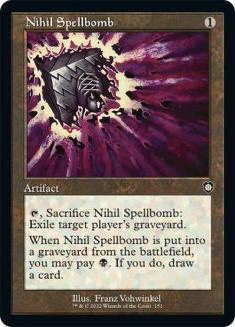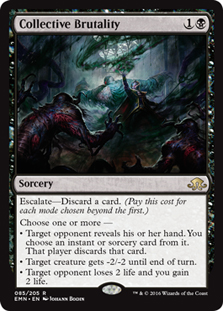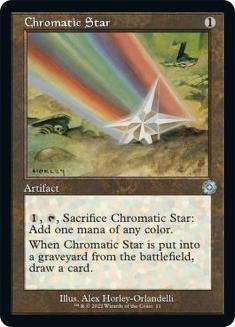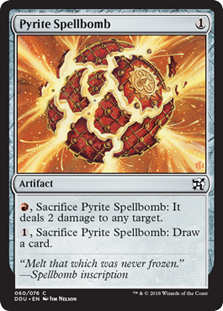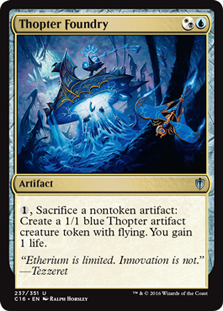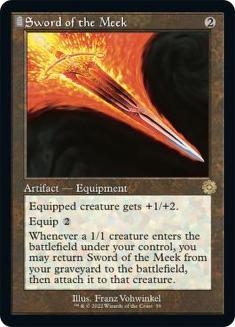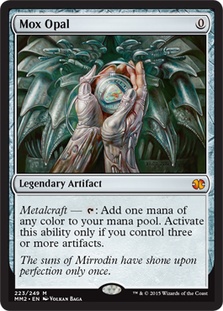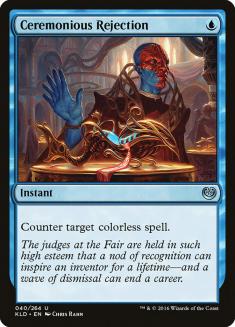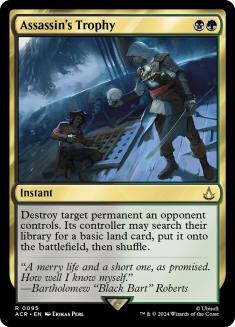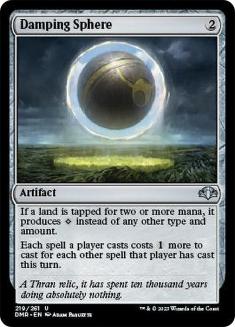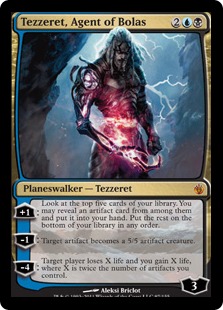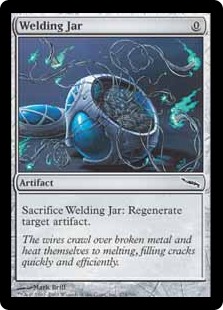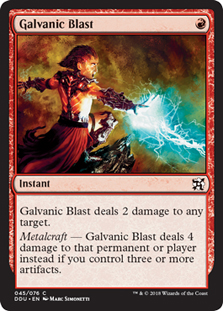Some of you reading this may recognize me from my time playing on the SCG Tour, but for those who don’t, let me introduce myself. My name is Harlan. I live in beautiful Charlottesville, Virginia with my wonderful girlfriend Liz and my extremely photogenic dog Nate. I work full-time as a warehouse supervisor here in Charlottesville and love to dedicate what little free time I have (much to the dismay of Liz) to playing Magic.
Ever since Modern Horizons release in June, I have been absolutely infatuated with Modern decks built around the combination of Urza, Lord High Artificer; Thopter Foundry; and Sword of the Meek.
Whirza decks have made the Top 8 of every Modern Open since the release of Modern Horizons and each time at least one of them has been my list. Brian Coval and I piloted a 75 of my design, with Brian finishing second and me finishing fourth, at SCG Pittsburgh. Brad Carpenter and I made the Top 8 of SCG Philadelphia, where he played a list we worked on together. I Top 8’ed again at SCG Columbus shortly after the Bridge from Below ban. Finally, Alexander Beebe made the elimination rounds playing the same list I registered in the event at SCG Richmond.
Four Modern Opens. Four Top 8s. No trophies. That all changed in SCG Dallas.
SCG Dallas was the first Modern event where Urza was legal and Hogaak wasn’t, and I have to say, I was worried. I had some reservations about the strength of the archetype without Hogaak around to draw the focus and to pad my win percentage a bit. I knew that, with no Hogaak, the graveyard hate would diminish, and with Stoneforge Mystic finally being set free in Modern, the artifact hate would rise. I was expecting to see Stony Silence, Collector Ouphe, and Karn, the Great Creator everywhere, and I did.
And you know what? It just didn’t matter.
Creatures (7)
Lands (20)
Spells (33)

All my fears washed away once I was finally sitting down and playing the matches again. Everyone brought the hate and I just ran through them anyway.
Leading up to the event, the thing I was asked about and thought about the most was Stoneforge Mystic’s place in Whirza. Obviously the Standard and Legacy all-star had a home in the midrange deck that played an infinite combo involving an Equipment, right? Wrong. I really don’t think it belongs in the various build of Whirza and there are a few key reasons why.
The main reason the powerful Kor Artificer doesn’t make the cut is its tension with the other two-drop Artificer that is a perfect fit for the archetype, Goblin Engineer.
I’m always told that both fill the role of being a tutor for Sword of the Meek while also being a creature that can threaten to do more as the game goes on, but that’s where you lose me. When I tutor for the Sword with Engineer, I have a creature on the battlefield that threatens to take over the game, drawing me additional cards or effectively blanking my opponent’s artifact removal, while Mystic leaves a practically irrelevant body on the battlefield that really doesn’t threaten to do much of anything except chump block.
“Well, I’ll just get Batterskull then.”
Okay, so now you have a five-mana artifact stuck in your hand that doesn’t further your gameplan in a format as fast and as powerful as Modern? Got it. I think I’ll stick to the two-drop that accomplishes exactly what I want it to and threatens to take over the game at the same time.
I’ll also add that even when both cards are being used as only tutor effects to combo and win the game, Stoneforge is still more expensive, being an effective four mana because the Sword is in hand when the Engineer puts it straight into the graveyard.
The additional plan you receive against aggressive decks from being able to get Batterskull as a way to gain some life and stop your opponent from attacking is also worse than (and even conflicts with) your best plan against those decks in getting an Ensnaring Bridge online. Not only can Batterskull not attack while you’re hiding behind your Bridge, but Mystic effectively draws you a card and ties up two additional mana, making it harder to get the Bridge online in the first place.
The only real upside I see to playing Stoneforge Mystic in the deck is to be able to remove red entirely, but the mana in this deck is as close to free as you can realistically get in Modern and the only white card I really ever want to play is Teferi, Time Raveler.
Now that I have that out of the way, let’s get back to where my head was going into Dallas.
I talked briefly earlier about Stony Silence effects and they were my main concern heading into the weekend. With no more Hogaak in the format, everyone had four to six sideboard slots once dedicated to graveyard hate that could be spent pretty much however they would like, and I had a feeling just about all of them would be artifact hate with Stoneforge’s entry into the format.
One thing you’ll notice that is different about my Whirza list from most is that I splash green for Assassin’s Trophy over white for Teferi, Time Raveler and Wear // Tear. I do this because, as great as Teferi is, he just doesn’t deal with Karn, the Great Creator and neither does Wear // Tear. Assassin’s Trophy kills Karn and also happens to be a clean answer to both Stony Silence and Collector Ouphe, making it my go-to countermeasure for permanent-based artifact hate. An additional thing I love about Trophy is that it allows me to seamlessly transition into a true midrange deck.
I don’t normally travel to Dallas for Opens since flights out of Charlottesville are pretty expensive, but with the Players’ Championship points race being as close as it is, I had to make the trip, and all I heard from everyone going was to expect Burn and lots of it. Now, I’m not one to buy into these geographic deck bias rumors, but I also didn’t want to show up unprepared and quickly be removed from the event as a result, so I showed up ready for action, and wow was I rewarded.
I played against Burn five times in the event. Five. Thankfully I was mindful enough to play two copies of Collective Brutality to shore up my already close matchup against Burn and was rewarded with a 4-1 record against the archetype and a, shall we say, “quick” win in the finals.
One of the hardest matchups for Whirza is Mono-Green Tron with four copies of Karn, the Great Creator, as the archetype was poised to prey on all the fair Stoneforge Mystic strategies expected to show up. Knowing that Mono-Green Tron could be well-positioned for the weekend, I needed to plan accordingly, so I registered a Damping Sphere and a whopping three copies of Ceremonious Rejection to bolster my matchup in the sideboard games.
Granted, skewing my sideboard to fix the Mono-Green Tron matchup left me underprepared for other big mana strategies like Amulet Titan and TitanShift, but ever since the printing of Modern Horizons, Amulet Titan just hasn’t risen in power level to keep up with the rest of the format, and although heading into the event I believed TitanShift to be well-positioned, I didn’t think many people would show up with it, and I was right for the most part.
I did room with SCG’s own Ross Merriam for the weekend and I found out he was wisely registering TitanShift, so I started to lay out my deck and look for ways I could make small improvements to help that matchup now that there was such a strong pilot playing the deck that I would surely have to beat to win the tournament. As I agonized about minor tweaks and card choices, Ross started to complain that I was going to “Kibler” him, a term derived from when Brian Kibler would make small tweaks to his deck to beat his teammates at Pro Tours. After much flack from Ross and not being able to come up with any options I liked better than the list I originally planned to play, I registered my deck and went to sleep.
Of course, I played Ross twice in the event and no other TitanShift players, and thankfully beat him with the age-old plan of just drawing better than your opponent in a bad matchup. Thankfully both matches were on camera, so I have video recordings that I didn’t even need to Kibler him to win.
Creatures (7)
Lands (20)
Spells (33)

Moving forward, I’ll be playing a Snow-Covered Forest. While it does make the mana a touch more awkward in Game 1, it’s an important tool I want access to against decks that have both Stony Silence and Field of Ruin so I have a green source to fetch if they kill my Breeding Pool. Increasing the number of fetches and basics also allows me to cast Arcum’s Astrolabe more reliably in the early-game, which I struggled to do many times throughout the event.
Having a more reliable manabase for Astrolabe and Assassin’s Trophy does come at the cost of the third Whir of Invention, but I have always preferred having only two copies due to them being clunky when draw in multiples. Chromatic Star is an easy stand-in for the Whir, as it improves Mox Opal, Thopter Foundry, Ensnaring Bridge, and Mystic Forge.
Sideboarding Guide
VS Burn
Out:
In:
VS Mono-Green Tron
Out:
In:
VS Azorius Stoneblade
Out:
In:
VS TitanShift
Out:
In:
VS Jund
Out:
In:
VS Humans
Out:
In:
With Whirza being the second-most-popular deck in Day 2 of SCG Dallas and me winning the event, I expect there to be an even larger focus on beating up on artifacts.
And you know what? Bring it.
I beat every Stony, Ouphe, and Karn deck I played against last weekend and I don’t expect that to change anytime soon. This is so much more than just another Mox Opal deck. It grinds just as well as Jund and Azorius Control and you have to be prepared for that plan too. Artifact hate simply isn’t enough because you have to also beat me in a fair fight too.


